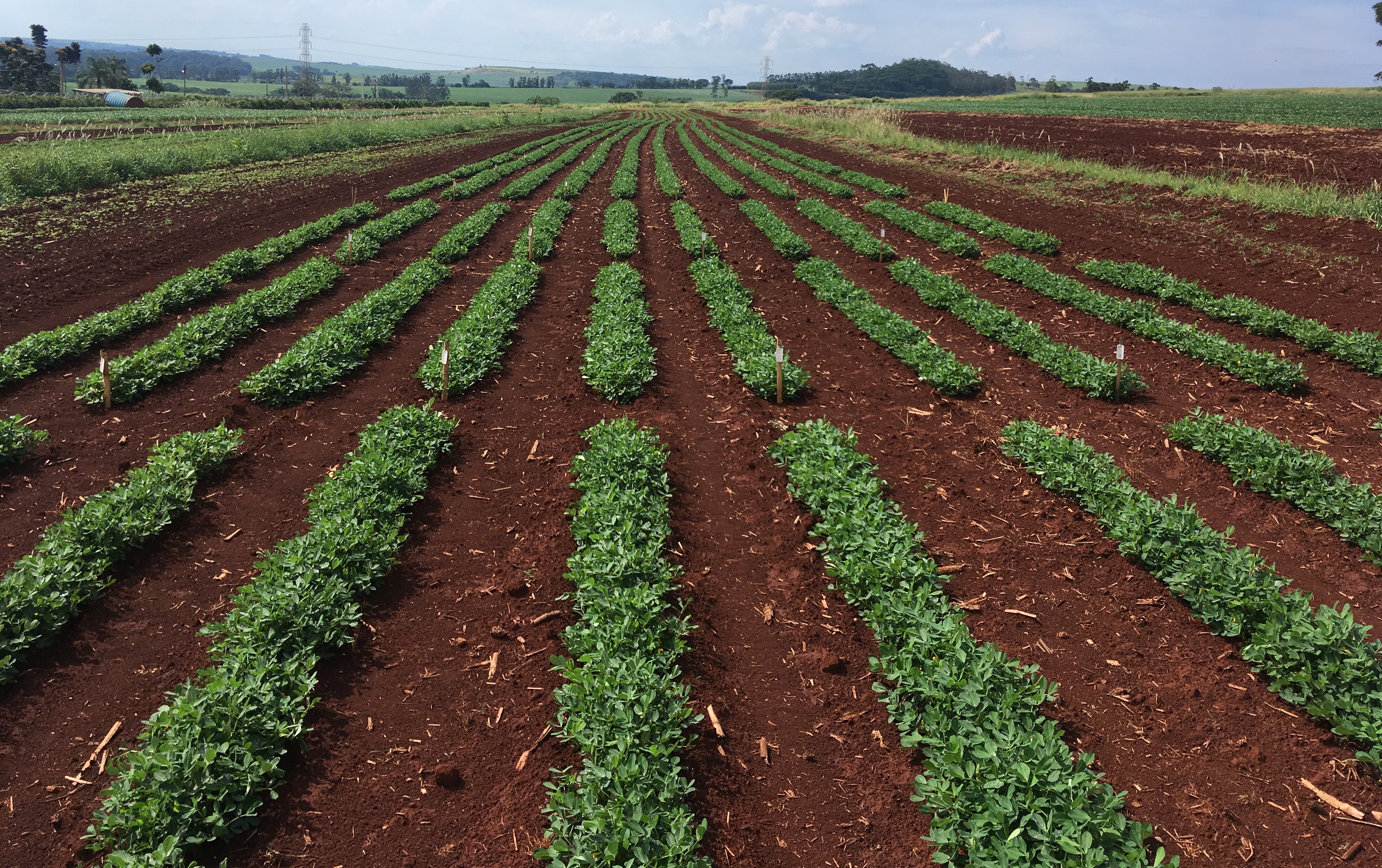Consortium of Microorganism and Their Effects on Peanut Pod Yield
DOI:
https://doi.org/10.17648/sas.v1i2.34Keywords:
Arachis hypogaea L., Biological products, KernelsAbstract
The objective of this study was to evaluate yield and pod maturity condition in peanut lines of the runner type, so as to indicate cultivars with reduced cycle. Maturity assesment was evaluated in two sampling dates before harvesting. The experiment was carried out in Ribeirão Preto, SP, Brasil, in randomized blocks design, testing tem breeding lines and two control cultivars. Pod maturity was evaluated at 119 and 125 days after planting. In each sampling date the plants contained in 0,5m of row were collected and pod maturity was determined based in a maturity table considering the color of the pod mesocarp, in a scale varying from white to black. Harvesting to evaluate yield was done at 125 days after planting, by digging one of the two lines of each plot. Along with pod yield, the following variables were obtained: percentage of the number of mature pods in each sampling date and the percentage of increase in mature pods from the 119 to 125 sampling dates. The results indicated that, when harvesting at 125 days, the line 13.24 as the most productive (7,625 kg ha-1). At 119 days after planting, the line 13.34 showed the highest percentage of mature pods (56.1%). The lines 13.15 and 13.24 showed the largest increases in number of mature pods from the 119th to the 125th day after planting. The results indicate that there are promising lines for selection as new cultivars combining productivity and earliness, to be confirmed in other environments.
Downloads

Downloads
Published
How to Cite
Issue
Section
License
Autores concordam com os seguintes termos:
a) Os autores mantêm os direitos autorais e concedem à revista o direito de primeira publicação, com o trabalho simultaneamente licenciado sob a LicençaAttribution-NonCommercial-ShareAlike 4.0 International, que permite o compartilhamento do trabalho com reconhecimento da autoria e publicação inicial na Revista SAS. A licença permite o uso, a distribuição e a reprodução irrestrita, em qualquer meio, desde que devidamente citada a fonte. Essa licença permite também que outros remixem, adaptem e criem a partir do seu trabalho para fins não comerciais, desde que atribuam a você o devido crédito e que licenciem as novas criações sob termos idênticos.
b) Não cabe aos autores compensação financeira a qualquer título, por artigos ou resenhas publicados na South American Sciences.
c) Os conceitos expressos nos artigos publicados na South American Sciences são de inteira responsabilidade de seus autores.








